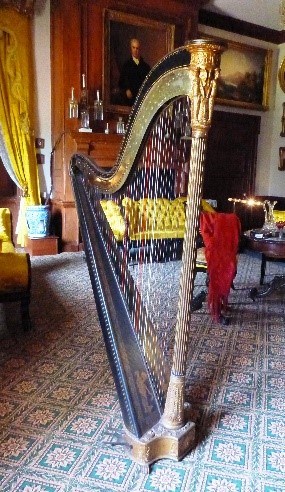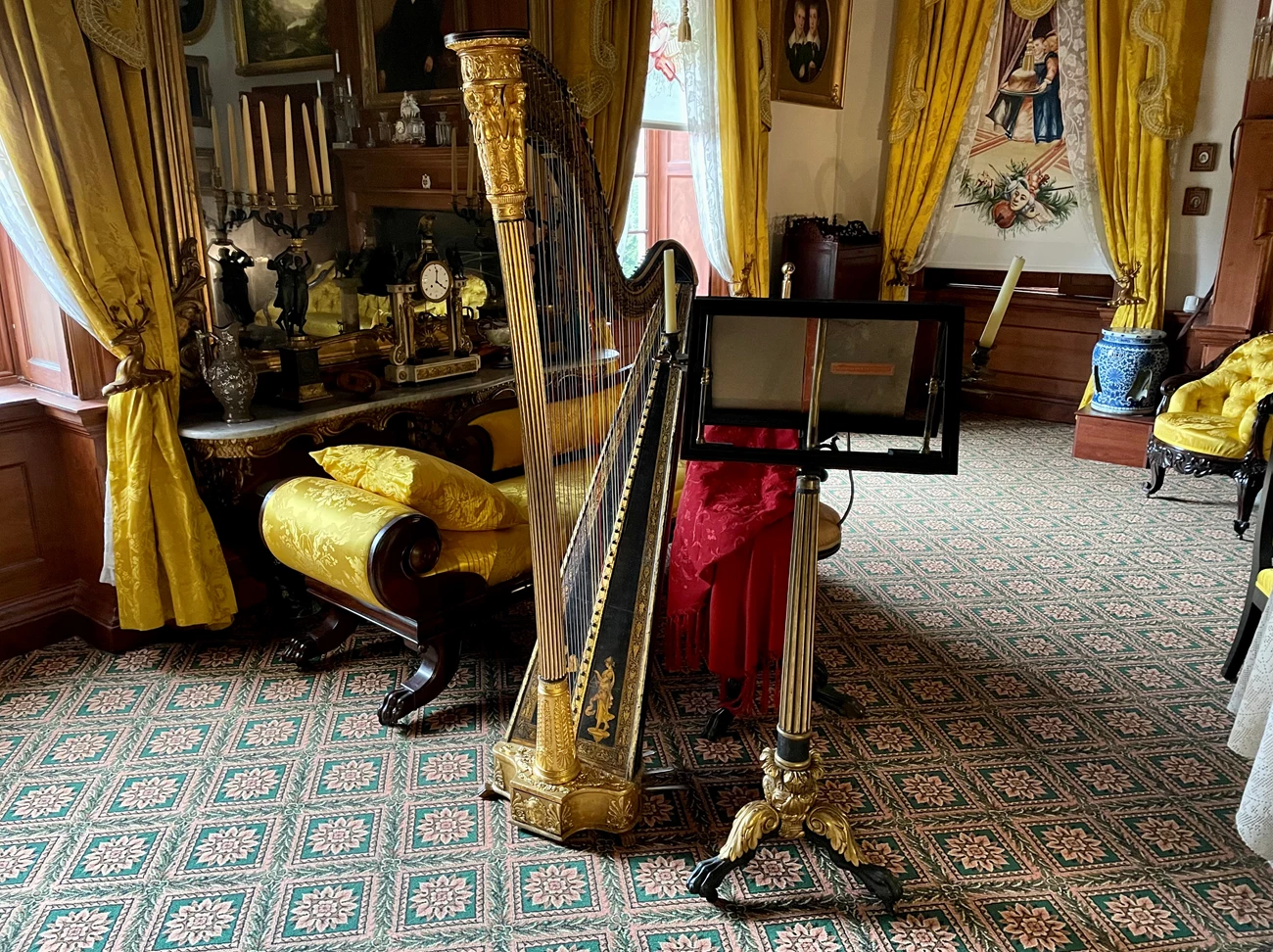Last updated: March 25, 2023
Article
Eliza Ridgely's Harp

NPS
Eliza Eichelberger Ridgely (1803-1867) was the only child of Elizabeth Eichelberger and Nicholas Greenbury Ridgely, a wealthy Baltimore merchant. As a teenager, Eliza attended Miss Lyman’s Academy, a progressive girls' boarding school in Philadelphia. To encourage her musical training while she was there, in June 1817 Eliza’s father purchased for her a harp for £122..18.0, a large sum at that time (equivalent to about $12,000 today). The next year, renowned portrait artist Thomas Sully painted Eliza at his Philadelphia studio. The now-famous painting, “Lady with a Harp,” hangs in the National Gallery of Art in Washington, D.C.
Eliza’s harp was purchased from the internationally renowned harp and piano maker Sebastian Erard, whose clients included the King of France and the Russian Czar. Leaving Paris after the French Revolution, Erard opened his business in London and subsequently spent eight years working on a major innovation. In 1810 he patented the "double-action" harp with seven pedals, the modern version of which is used by professional musicians today. Eliza became an accomplished musician, and the hundreds of surviving pieces of highly complex sheet music by leading composers she owned testify to her talent and sophistication.
Eliza married John Ridgely (no relation) in January 1828 and moved to the Hampton estate about ten miles north of Baltimore, bringing her harp with her. After her death in 1867, the harp remained where it had been since 1828, in the Music Room at Hampton. Now, as part of Hampton NHS’s museum collection, it is one of the oldest surviving double-action pedal harps in the United States and may be the oldest currently on exhibit at a museum.

NPS
Over its long life, the harp gradually fell into disrepair. Flawed restoration work to the surface decoration in 1975 unintentionally caused additional problems over time. The strings were loosened to prevent major damage which the high tension can cause to an antique harp, but the instrument’s age, environment, and lessened tension led to column warping and other condition issues that needed to be addressed.
Looking forward to the harp’s 200th birthday in 2017, NPS curatorial staff at Hampton NHS recognized that professional conservation work was greatly needed. After a lengthy and extensive search to identify the expert professional conservators that were needed, specialized musical instrument conservators working in New York City examined the harp and submitted detailed treatment proposals in 2016. With the encouragement and support of local professional harpists, Hampton NHS's partner Historic Hampton Inc. raised funds from private sources to pay for the necessary conservation treatment, which began in 2019. Although the work was delayed by the pandemic, treatment was completed early this year, and the expertly and meticulously restored harp has at last returned to its home in the Music Room at Hampton.

NPS
